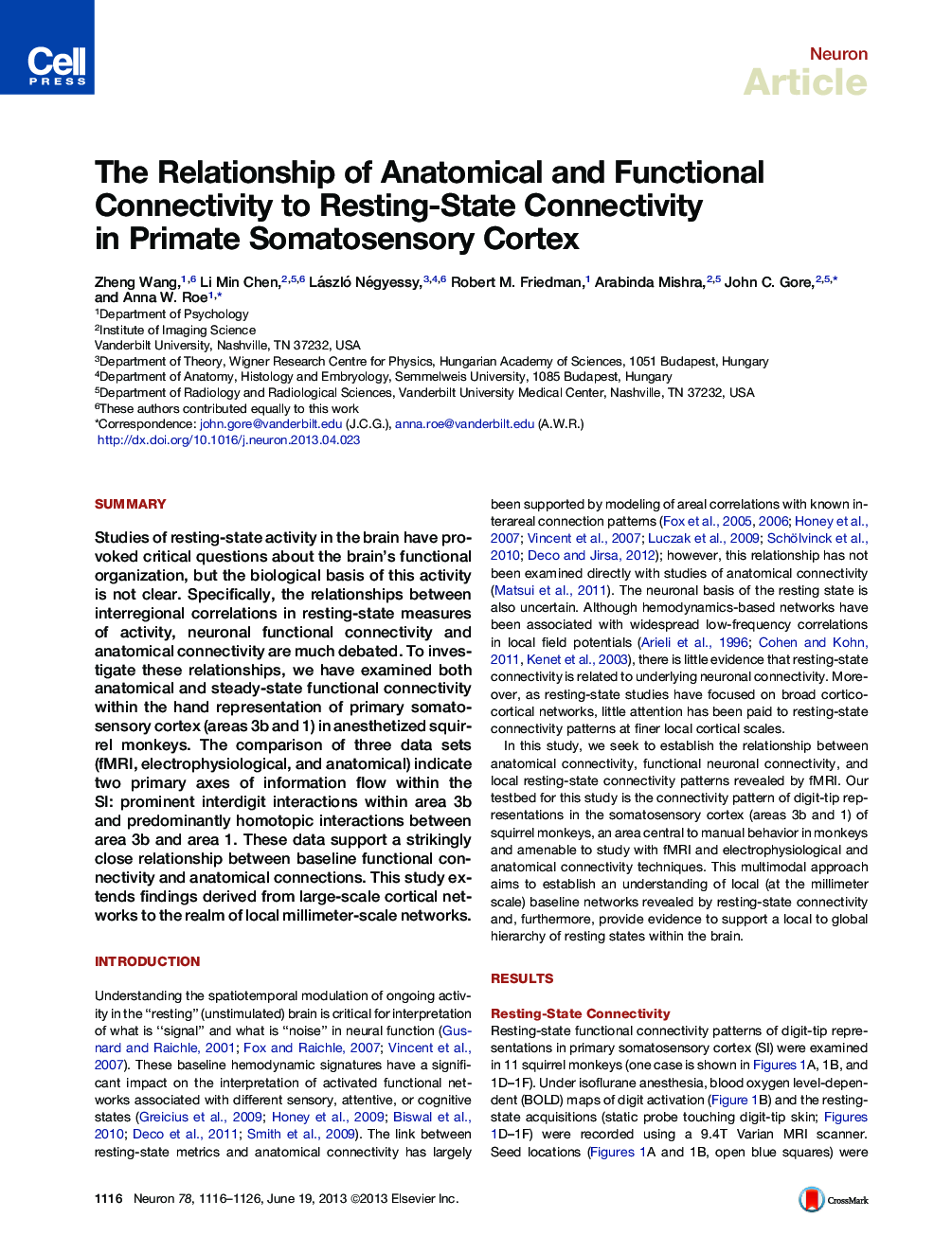| Article ID | Journal | Published Year | Pages | File Type |
|---|---|---|---|---|
| 4321163 | Neuron | 2013 | 11 Pages |
•Anatomical, neural, and resting-state connectivity patterns are very similar in SI•Intra-areal connections are cross-digit; interareal connections are same-digit•Resting-state patterns reveal functional connectivity at the local millimeter scale
SummaryStudies of resting-state activity in the brain have provoked critical questions about the brain’s functional organization, but the biological basis of this activity is not clear. Specifically, the relationships between interregional correlations in resting-state measures of activity, neuronal functional connectivity and anatomical connectivity are much debated. To investigate these relationships, we have examined both anatomical and steady-state functional connectivity within the hand representation of primary somatosensory cortex (areas 3b and 1) in anesthetized squirrel monkeys. The comparison of three data sets (fMRI, electrophysiological, and anatomical) indicate two primary axes of information flow within the SI: prominent interdigit interactions within area 3b and predominantly homotopic interactions between area 3b and area 1. These data support a strikingly close relationship between baseline functional connectivity and anatomical connections. This study extends findings derived from large-scale cortical networks to the realm of local millimeter-scale networks.
